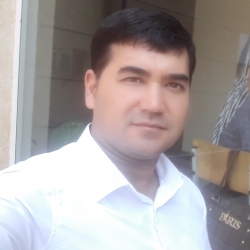Basic concepts of acting psychotechnics in the school of modern acting art.
Annotation. Each educator, while committed to the school of theatrical arts, develops his or her own style of teaching based on his or her many years of experience. This process is not intentional. Here, as we have said above, just as there are aspects of acting that are inherent in nature, so there are inherent aspects of pedagogy that are inherent in nature.
Keywords. Theater, acting, school, school of tradition, actor, stage theory, singers and ballet.
Relevance of the topic. Each profession requires a certain amount of knowledge, skills and abilities. Without them, we cannot call ourselves experts in our chosen field. In the field of artistic creation, inchunun. Everyone knows that it is impossible to master the basics of the chosen field of art without mastering it. But when it comes to acting, there are always different opinions and views. It is said that a talented actor does not need any school, and no school can help an incompetent actor. The implication is that you don't have to study acting to be born an actor.
There can be no objection to the idea that a future actor should have talent. But how do you evaluate the fact that talented musicians, singers and ballet dancers work for years to develop their natural talents and master the techniques of their art? Why should a theatrical actor be gifted by nature alone?
True art is a combination of ability and skill. Skills, on the other hand, are shaped by a school of experience and tradition accumulated over the years. The school processes and develops the qualities given to the student by nature, gives him the necessary knowledge and skills, leads him to an effective form that is flexible and able to perform any creative task.
As with any art form, the success of a theater school depends first and foremost on the right choice and the spiritual maturity of the talented young people who are educated in the theater school on the basis of that choice. Because an artist who doesn't strive for perfection can't follow an entire generation of viewers. The upbringing of a perfect person is one of the most important and always topical issues. Many writings, articles, and pamphlets have been written and will continue to be written along the way. [1.Abdullayeva, B.215]
According to the first Uzbek playwright Mahmudhoja Behbudi, "Theater is a school", the role of theater, as well as literature and all other arts, in the education of the perfect man is invaluable. That's why we should never rush to solve the problems of young people who have chosen the path of theatrical art and acting. If a student accidentally decides to study acting (who does not dream of acting at a young age), it is necessary to show in time how to correct this mistake. The goal is for the student to find his or her place in life so that he or she will not regret it later. The first step in the so-called theatrical art is to write a manual or book about the process of training an actor in a consistent, natural sequence, to put the method on paper as in the course of the lesson. if they are human, they all have different personalities, different from each other. This means that the same style cannot be applied to everyone at the birth of an actor who creates human character and discovers the psyche.
Therefore, it is very difficult to write a methodical book on acting that can be applied to all times and all students. Even when writing, it is possible to memorize some pieces of the creative process, to seal creative findings, to put some approaches on paper as examples, to put them into a coherent system as much as possible. In addition, it is better to rely on experience, the principle of creative communication based on the characteristics of the student, to help him discover his identity. [2.Zaxava, B.71-79]
Aims and objectives of the topic. Young people admitted to the student body must be given objective information about the art of theater, its difficulties, the specific difficulties and advantages of the acting profession. Only then should you move on to the next step. This process is a special, perfect musical-rhythmic form for students of acting skills (psychotechnics), types of art, including the peculiarities of musical theater, theatrical ethics, artistic level, elements of acting skills, musical theater acting upbringing (the process of training musical theater actors differs in this respect from the process of training a dramatic theater actor, because the process of evaluation and action in musical theater depends on the tact, the size given by the composer, in fact, theatrical art - conditional art, but this explains the high level of conditionality of musical theater). “Because stage theory allows a student who is just entering art school to consciously learn the secrets of acting. Theory plays an important role in the acting profession. Learning this stage theory is a must for any professional actor. Just as theory opens the way to practice in every science, so in acting, the theoretical foundations are connected and supplemented by practice. The actor will be required to study the theory of the scene, as well as master the technique of acting. This will be achieved step by step on the basis of certain practical exercises. The basics of acting techniques should be taught in depth in the first and second years. The lessons will then focus on working on the play and the role, and learning how to create a scene. ” [3. Stanislavskiy, B.93-99]
It is important to note that the educator must approach each student based on his or her unique characteristics. Only then will its natural features be preserved, and the nature of natural-organic behavior on the stage will be strengthened and developed. A student who works naturally today with the requirement of “I am in a given situation” will grow up to be an artist who can act naturally in a “given condition is my role” tomorrow, and finally in the form of an emblem. The educator must be able to instill in students confidence in their own strength, in their chosen profession, to guide them in the future life, in the implementation of their goals, to help students develop a sense of creative ethics and commitment to human duty. . After all, the future of the nation, the path of art, how it will look, is directly related to the creativity and personality of the student who is brought up by the teacher.
In fact, the pedagogy of theatrical art was gradually formed. But due to the complexity and contradictions, it did not always work out. The old school, which preserved the outdated superficial style of performance of great actors like the apple of an eye, was unable to reveal the inner essence of creativity. KS Stanislavsky founded the school of modern acting. For the first time in the history of theater, he laid the foundations for such concepts as stage theory, acting psychotechnics. There is evidence in history that there have been previous attempts to establish a theory of acting. For example, in his tragedy Hamlet, Shakespeare introduces the famous "Trap" scene into his work. In this scene, Hamlet gives the actors tasks to perform during the show. This process has the same character as giving a theoretical task to an actor by a director. But from a modern point of view, it remained the first form of theoretical armament of the actor. Only K.S. Stanislavsky brought the issues of stage theory, ideas about acting techniques to the level of science, and it was recognized all over the world as the "Stanislavsky system". Because the purpose of the system was to help actors create a "life of the human soul" through a role on the stage, immersed in a living, artistic reality. In order to achieve the same goal, research was conducted and a theater school was established. This school requires unity of form and content. [4. Maxmudov, B.254]
Conclusion. Each educator, while committed to the school of theatrical arts, develops his or her own style of teaching based on his or her many years of experience. This process is not intentional. Here, as we have said above, just as there are aspects of acting that are inherent in nature, so there are inherent aspects of pedagogy that are inherent in nature. Because just as it is impossible to form a person without acting skills, no matter how hard you try, it is impossible to form and develop a person without pedagogical qualities.
If we think of theater as a production industry, its production must be a good show. And for a good show to come, you need good raw materials. In theatrical art, this raw material is the play recommended by the playwright. A theater that is not equipped with good drama is an example of a company that produces low-quality products and eventually goes bankrupt. So without good drama, you can't imagine a theater with actors and directors who want to create there. Dramaturgy is an art form that provides theatrical activity. The reason we call it an art form is that any good play is a product of intellectual, emotional, ideological and artistic creation and provides the basis of the theater. On the other hand, good drama not only gives the audience a deep spiritual nourishment, but also serves the creative growth and perfection of the ensemble of directors and actors. A good play is distinguished, first of all, by the urgency of the subject matter, and by the fact that the scenes are based on constant struggle and action. I will never forget one of the words of our teacher A. Sayfiddinov: [5. Maxmudova, B.65]
Professor M.Abdullayeva's book "Acting skills in dramatic theater and cinema" contains a very relevant idea about directing, which is an integral part of theater. "When it comes to theater, another important part of it is the director. The process of creating a play is directed by a director. But that doesn't mean it's a boss who puts pressure on the creative process in the theater. The director must know and feel the creative potential of the theater team, each member, internal and external organics. It is up to the director to ensure the unity of the team for the production of any play. The most important aspect of directing is the process of working with the actor. The main tool in the art of directing is the actor. " That's right. This cannot be ignored. In fact, the director directs the birth of the play. The director must know and feel the creative potential of each member of the theater team and take the distribution of roles very seriously. Proper distribution of roles ensures at least fifty percent of the success of the future play. Another important aspect of directing is the process of working with actors. The director must be able to interest the ensemble of actors in the chosen issue, to inspire them, to use the product of the actor's creative imagination in due course, and to motivate the actor creatively for various discoveries. A good director should listen to the advice of everyone involved in the creative process and, when the time comes, be able to skillfully apply them to the stage solution of the play he or she is staging. He should try to avoid selfish qualities, especially when working with an artist. Because the artist is a creator who can express the director's comments on the solution of the stage work in the form of scenography. Sometimes the artist's ideas can lead to unexpected decisions for the director himself.
The sequence of events in the work moves on to the stage of organic action, which is formed on the basis of the identified materials after the study of the facts. An important question that motivates the actor to be creative - what would he do if the story of the protagonist happened to him right now, right here? Asks questions and seeks answers in action on behalf of oneself, not verbally, as required by the art of experience.
In order to bring any image on stage, that is, the image of another person, in a natural, convincing way, the actor must first act on behalf of his own personality, relying on his personal imagination. In "In the world of images" E. Umarov not only takes the play from the playwright and imagines his hero, but also seeks the natural actions and speech features that correspond to this image. An artist who puts himself in the shoes of this hero creates an aesthetic reality on stage, that is, he "breathes life" into the image of a stranger. " he writes. He added: "For an actor's performance to be natural and believable, he must rely on his imagination and the logic of the protagonist's actions on stage. The more the actor understands the intentions of the playwright, the more life experience he has, the more natural and realistic his art will be. However, his interpretation of his role on stage should not deviate from the logic of the scene. There can be no real acting without this kind of performance. ” [6. John Benedict, B.192-195]
According to Stanislavsky, an actor learns to use his personal experiences to create an image on stage. This creates an organic creative environment for the actor. The actor must be able to accurately assess the living conditions of the role in order to perform even the most elementary action. For example, without knowing where you are coming from and where you are going, one cannot confidently perform a simple physical action - opening a door. As the events unfold, the context in which the work is presented and the role of the actor's image in it become clearer.
Based on my directorial experience, I would like to point out that there is a big difference between imaginary image behavior and action in the process of reading and discussing a work around the table and the practical process on stage, stage conditions, and relationship requirements with the partner. In this context, not only the psyche of the actor, but also the various sensory organs, the muscles of the body, and in general his whole physical and mental state are involved. The actor not only creates the image of the protagonist in such a demanding environment, but also sees and feels himself as a person, and as a result begins to understand the work more clearly in practice.
In the early stages of the action, the actor's image completely falls into the mold, causing the actor difficulty and causing the scene to lie. It is also wrong to ask an actor to memorize the whole text. At first, the actor should try to embody the image in the form of an image, as he perceives the story of the work, as he imagines it to be. Only then can his deeds and actions be more convincing. The educator should not torture the student actor with difficult tasks. After all, an actor may suddenly be unable to enter the life of an image and a play from the heart. Therefore, in the beginning, the actor should not bother with various difficult tasks, but should study simple, simple physical actions, look for logic and purpose in them.
No matter what character the actor plays, he has to act on his own behalf, on behalf of his feelings and experiences. As he loses his identity in any role, he loses the organicity of the image, which has lost its natural sensation. Only an actor can give the natural feeling of any character. For this reason, any character must be performed by the actor on his own behalf under the conditions given by the author. The complex and difficult process of an actor working on a role can be confusing to the student at first, and can lead to a lack of confidence in the technique. It takes a lot of practice, instruction, and the wisdom of a teacher to fully understand the nature of the tasks that a teacher gives.
If the student-actor has mastered the technique of stage skills, he will be able to perform the same physical action in different conditions. It is also easier for a student to perform actions that they can easily perform in the classroom during a stage setting. If the actor seeks the logic of action on the stage without blindly following the author's opinion, it means that he thinks, tries to imagine himself there to penetrate into the inner world of the image. As an example of Sharof Boshbekov's "Iron Lady", his protagonist Kochkor finds himself in a ridiculous situation under the conditions set by the author. It’s funny in the eyes of the audience as well. However, the actor performing it does not feel the slightest laugh in these situations, and his performance comes alive.
In the process of creating an image, the actor must not spoil his organic nature, no matter how small. Once the introductory phase of the work is complete, the sequence of events and the plot should be determined, without complicating the analysis of the work, and move on to the practical process, the scene conditions, the relationship with the partner. Because when you go on stage, you have to learn all the basic elements from the beginning. This is the law of the scene. As you work on each new role, you will re-learn how to act. [7. Shtrakin, B.73]
In the first scene of "Iron Lady", Aries wakes up with his hands and feet tied to a tree. In the play's remark, Kochkor says, "... he must have fallen asleep in this tune, first moving slowly, then yawning without opening his eyes." He is surprised that his limbs are not obeying him, and he gets a couple of bruises. ” called So he spent the night in a tree under awkward conditions. The body of the actor playing the role of a ram should also feel the effects of this discomfort for a long time, the author should not blindly perform the actions indicated in the remark, but should search for himself and identify the elements of behavior. . What happens to the body of a person who spends a night tied to a tree? How does it feel? What if he drank a lot of alcohol? The actor has to ask himself similar questions and look for answers. Only an actor who seeks the truth in every action and thought, who seeks to express the truth, is considered to have carried out the process of natural creation.
It is known that in the process of each rehearsal of the work on the stage, new facts, actions, ideas and tasks are identified and discovered. In this process, the actor's task is to avoid blindly repeating the actions that were found yesterday and performed today. However, in most theaters around the world, this error has become commonplace for many actors. The educator must inculcate in the minds of young student-actors a new approach to each rehearsal process and the habit of searching for naturalness, authenticity, logic in every action. The physical action found yesterday must be performed today in a new style, based on a new logic. [8. Ismoilov, B.154]
Actors need to know exactly what they're doing, asking themselves, "What am I doing?" and why, how, and how do I do it? Instead of complicating the task with questions such as, it is advisable to refer the answer to emotional experience. It is very easy to blindly turn an action into a stamp, and if one action is performed in the same way every day, it becomes a stamp, not an action.
The most frightening mistake an actor makes in searching for an image is that an organic line, once found through emotion and experience, remembers the external form of the action and repeats it many times, turning it into an external stamp. To combat this scourge, it is important to educate the younger generation of actors to avoid making such mistakes. Actors need to set the process of working on the role in the right way, that is, in each creative process, they should strive to perform a lively, natural organic action without trying to repeat the result of yesterday or the day before. In the process of rehearsal, during the repetition of each action found, it is necessary to enrich it with various new findings, and to this end, to think, to look for new conditions of action. To do this, the actor must first see and study himself in the context of the given role, and then refer to the author's text.
List of used literature.
Abdullayeva M. “Acting skills in dramatic theater and cinema” - “Tafakkur qanoti” publishing house-T .: 2014. 215 pages.
B.Ye. Zaxava. "Master's Actor and Director" Moscow 1978g. Pages 74-79.
KS Stanislavsky "The actor works on himself" pages 93-99.
Maxmudov J. “M.Chexov. "Actor's technique" - translation (2016) 254 pages.
Makhmudova H.-.- Text of exercises from the subject complex "Acting skills". -T., 2016 y. 65 pages.
John Benedict. The Actor's Work on Himself (KS Stanislavsky) -Routledge 2008. pp. 192-195.
S.P. Strakin “Grim” Moscow 1971.73 p.
M.Ismailov "Scene Makeup" 2004. 154 pages.

















